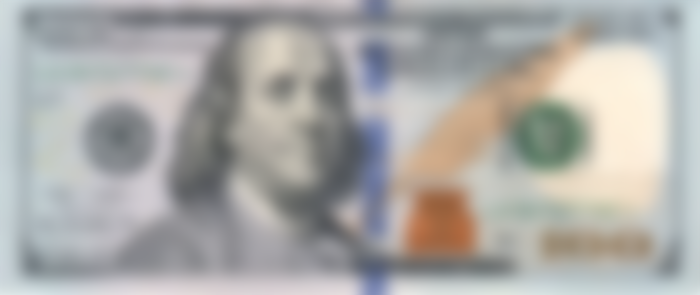In case you missed the earlier part, check the link down below
Money!!! - Part 1
The paper note was the next step in the evolution of money
Paper money is easy to exchange and can be converted into gold or silver. You can consider this paper note as a slip of promise from the state. You will be given gold or silver for that amount when you present it to the treasury.
But it also posed a challenge to international trade, This means that the price of gold is one in the whole world, so it can be calculated by weight and accepted, but the paper currency is different for each country, so how will it be international trade?
This required a currency exchange system when the conversion rate was fixed for each currency with gold or silver so it was easy to convert from one currency to another.
for example,
If fixed ten units of X currency with one ounce of gold and set the other twenty units of Y currency with one ounce of gold, the conversion was simple.
X = 2Y
Both currencies need to be convertible into gold at a fixed price.
From the 18th to the early 20th century, this was the official system of exchange and it was called the Gold Standard.
The Specific classical gold standard.
It was very easy for countries to trade during the Gold Standard era, so the total volume of trade increased a lot.
And when this standard was broken during World War I, there was a lot of grief over its loss, People made a lot of noise to restore the gold standard.
Unfortunately, this was difficult to do, Because there was less gold and silver to pay off the debts of World War I. The UK had printed so much money to finance the war that if all supplies were to be converted back to gold at earlier rates, the amount would be much higher than the UK's gold reserves.
The situation was similar in other countries that were on the gold standard. That's why there was a gap between world war I and world war II (also known as the INTERWAR ERA) of any global system of exchange.
Then, after a conference in 1945, the winners of the war decided on the new system which is called the qualified gold standard. In which only the US dollar can be converted to gold and all other currencies will float with the dollar.
This system was good for rebuilding Western Europe from the devastation of World War II. But then in 1971 Richard Nixon unilaterally broke the US dollar bonding with gold. And for the first time in history, we went to fiat currency.
Fiat currency is different from anything associated with the old currency because gold or silver has nothing to do anything with it.
However, it has to do with the trust of the people and the institution that issued it. In the example of the US dollar, people have confidence in the US Federal Reserve Bank, which issues dollars.
Fiat currency is still used today, but it is a small percentage of the world's total currency. If you keep in mind the world's balance sheet. So the question is, where does all the money come from?
To understand the different sources of money, we have to understand the role of banking institutions in today's vast economy.
The first thing that comes to mind is that banks Give as loan your savings to other business people. But you will be surprised to read how banks create credit systems. Through a system called fractional reserve banking system.
The simple idea is that when a depositor puts a hundred dollars in a bank, they put a fraction of his account or for example 10 percent of the amount.
I mean, you have a hundred dollars in an account, but only ten dollars on hand in a bank. now The question is where does the rest of the money go?
The rest of the money the bank gives as a loan to other people. It doesn't end there. Your remaining 90 dollars the bank gives to someone else and also puts a fraction to their account. That is, nine dollars and the remaining eighty-one dollars, the bank gives a loan to a third person and it continues like this.
The end result is that there is a lot of money showing in the account, but the bank does not have that much fiat currency on hand in the bank.
Then another question arises what will happen if all the bank account holders reach the bank to withdraw their money at the same time?
And sometimes it does. In that case, the bank has to borrow from another bank to fulfill the promises made to its customers.
If a lot of people go to the bank to withdraw their money which is called run on the bank, then the bank goes bankrupt.
So now we're talking about the present, now are days we live in a world of paper money. Fake money in electronic bank sheets is made by the fractional reserve banking system.
You are not wrong if you think money is the only digit, That is a digital currency in which if someone sends you money to the bank then the numbers in the bank simply decrease or increase. In fact, it is a digital currency that clears financial transaction debit or credit card payments in a second.
So now comes the entry of Cryptocurrency a new type of digital currency, But it has some fundamental differences.
The first difference is that the supply of cryptocurrency is restricted through blockchain. Blockchain has decentralized documentation of all transactions. There is an algorithm that tracks every transaction. All nodes are included in this tracking and we can also get our stake by inserting our nodes.
Cryptocurrency is more secure than traditional money. This means that you have to penetrate 50% of the active nodes to block the blockchain ledger, which is an impossible task.
Cryptocurrency is an alternative type of money that is not regulated by any central bank or government. Cryptocurrency users are free from the tyranny of the central bank. Now the acceptance of cryptocurrency is increasing from time to time. But it will be mainstream only when the government starts accepting it to collect taxes. In the future, we can expect that the central bank will also adopt it to issue money.
The downside is that the government will not have the capacity to pump liquids and will not have the capacity to print money. The ability to control the supply of money is an important tool in keeping the economy strong and controlling exchange rate fluctuations, so how will the cryptocurrency system turn around?
Only time will tell...
So one more time take a look at this hundred-dollar bill and think about what can be done about it, Right now?

Money is a useful human invention that has enabled us to be part of such a wide range of economic activities as exchange, which is the most basic human interaction.
This 100$ bill is Imagination,
But the impact of it very heavy on our generation.
That's it from my side


